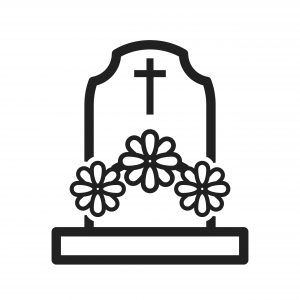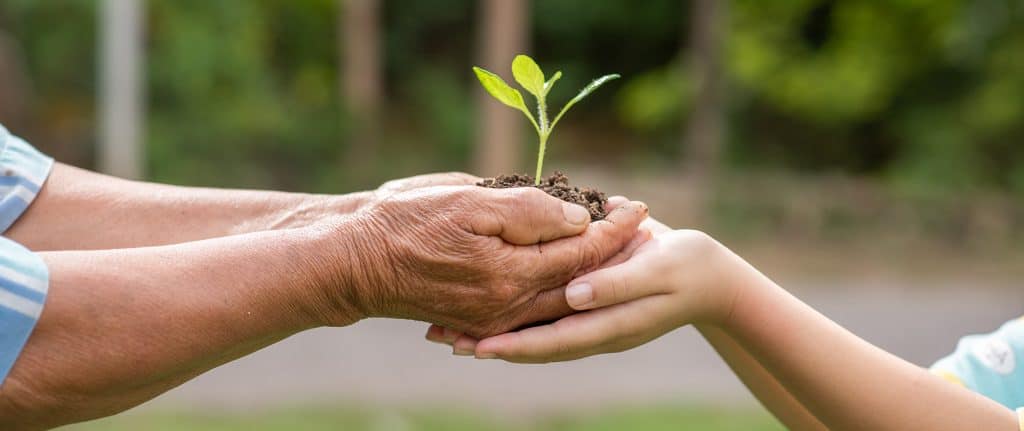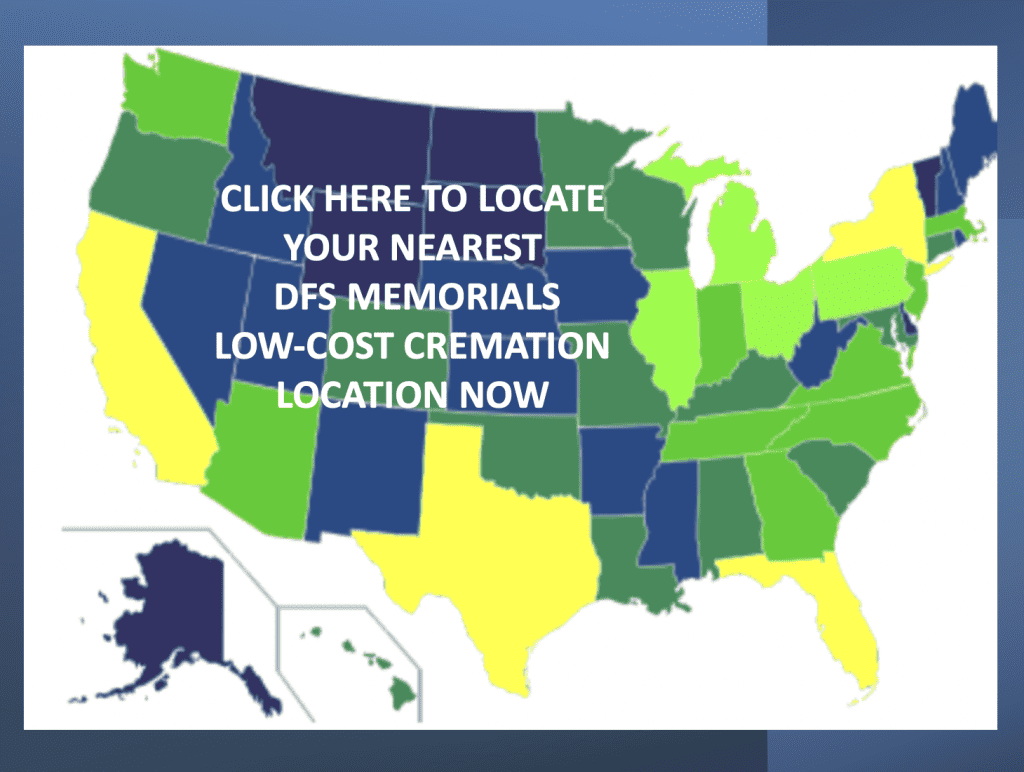Choosing between Burial or Cremation
When it comes to arranging a funeral today, you have two main funeral options to choose between when selecting your disposition method – burial or cremation. A ‘funeral’ refers to the activity that takes place in arranging the disposition.
A funeral or funeral service can be a burial or a cremation. Deciding between burial and cremation is a personal choice. Many choose based upon the traditions and beliefs associated with their faith, but changing religiosity has meant that people tend to be less fixed in which disposition method to select these days.
Over the last decade, the burial rate has declined as more families have opted for cremation. The national cremation rate now stands at 59.2% and is forecast to reach almost 80% by 2035.

Choosing Burial
For those who believe in burial as opposed to cremation, they feel that this ritual demonstrates respect for the human body. They also believe that the body should be allowed to decay by a normal process instead of the hastening which occurs during cremation.
Although the Catholic Church accepted cremation in the 1960s, many Christians are still uncomfortable with the notion of cremation and prefer to opt for burial. Burial still outweighs cremation in many of the southern and Midwest states, where religious views and tradition still underpin much of the funeral ritual.
If you choose burial, you will require a casket, a cemetery plot, and possibly a burial vault, and you may have the option to choose to have the deceased embalmed.
These items alone can cost in the region of $2,000 – $10,000, and therefore make burial a more expensive option than cremation.
The ritual of burial is an opportunity for family and friends to say a last goodbye to their loved ones. After the funeral, they will then often gather at the home of a family member, where food and drink are served, and a funeral reception is held.
This provides a further opportunity for the sharing of grief and mutual consolation of the bereaved. However, this same practice can be observed, and then cremation is conducted as opposed to burial.
Some people feel uncomfortable with the notion of their body slowly decaying underground. Likewise, there is a concern that the decline in burial will result in a loss of the legacy of history. That a decline in traditional cemeteries and grave markers may erode the remnants of our culture for future generations.
Having a place to go to visit the departed provides solace to many loved ones. Does a burial site provide a tangible link to the deceased? Maybe, but cremated remains can also be interred, either in a gravesite or in a niche or columbarium, providing a dedicated site that family can visit. Some families even prefer the fact that cremated remains can be kept close by at all times.

What is a ‘Green’ Burial?
‘Green’ burials have grown in popularity in recent years as society has become more alert to ecological and environmental concerns. In some ways, a green burial is reverting back to the natural method of burial we employed hundreds of years ago before we used embalming chemicals and reinforced steel caskets.
For a green burial, the deceased is not embalmed, is placed into a simple shroud or wooden coffin, and is buried directly into the earth. No chemicals, steel, or concrete should be part of a green burial process.
Recent surveys conducted by industry bodies indicate that 52% of Americans would consider natural burial as a disposition option.
To learn more about Green Burial, visit our Natural Burial Resources.
Choosing Cremation
The practice of cremation dates back to the Pre-Canaanites, who used it until about 2,500 BC. It was not practiced by the Egyptians, Jews, Phoenicians, or Carthaginians. The Greeks and Romans based their practices according to the way they viewed the afterlife.
Those who believed in a life after death buried their dead with food, pets, and even servants to smooth the transition from one form of existence to another. Others who believed that the body decays practiced cremation so that the deceased would have a speedy trip to the afterlife.
Today, cremation is not allowed by the Orthodox Jews, the Islamic religion, the Eastern Orthodox religion, and some Fundamental Christian sects. Whereas religions such as Hinduism, Sikhism, Buddhism, and Jainism all mandate cremation.

What exactly is cremation?
A cremation is usually conducted at a crematory. The body of the deceased is placed into a cremation chamber or retort and reduced to fragments of bone and basic chemical compounds through temperatures ranging from 1,500 F to 2,000 F degrees.
The actual cremation process takes from two to three hours, with the time depending upon the weight of the individual. A casket is not required by law for cremation. A suitable alternative container can be used. This can be a basic cardboard or plywood box.
To read in more detail about cremation, visit our section on Understanding Cremation and Cremation Laws or our Ultimate Guide to Cremation Services.

The Environmental Impacts of Burial and Cremation
There are environmental concerns about both burial and cremation. As mentioned above, burial today can be extremely detrimental to the natural ecology. We actually bury into our earth more than enough embalming fluid every year to fill more than 8 Olympic-sized swimming pools, and there is concern about how this is affecting our water table as corpses decompose and these chemicals leak into the ground. In some metro areas, we are simply running out of space to bury the dead.
Cremation has been viewed as a greener alternative as we are not burying so many chemicals, steel, and concrete into the ground. However, the use of energy to power the furnaces can be considered detrimental to the environment, as can some of the gases that are created as a result of cremation and poured into the atmosphere. In terms of energy consumption, a single cremation equates to a 500-mile car journey.
Changing funeral trends and options – Green Cremation & Natural Organic Reduction
Natural or ‘green’ options are gaining some popularity in both burial and cremation. As mentioned above, green burials use just natural products, so they can be friendlier to the environment and also cost less.
Aquamation, Resomation, or hydrolysis cremation is the process by which the body is disintegrated or dissolved using water and temperature. This process is considered kinder to the environment as it does not produce inert gases, and the resulting water and organic matter can be flushed safely into our drainage system. Promession is another alternative method of disposition that involves freeze-drying human remains.
Read more about Aquamation, Water Cremation, or Bio Cremation, including which states offer this green cremation alternative.
Natural Organic Reduction (NOR) has now been legalized in 5 states, with several more in the process of passing legislation to introduce NOR as a legal disposition method. It has been referred to as “human composting.”
This is a process of speeded-up natural organic decay in a steel container. The resulting soil can be used as fertilizer. It is considered a new ‘green’ death care alternative. And can serve metro areas where there is a lack of natural green cemetery space.
Read our article on Human Composting to learn more.
Cremation is certainly a growing trend in the U.S. and a trend that is going to continue. Currently, the cremation rate is at around 59% nationally but is due to rise to around 80% by 2035. Many other countries have cremation rates as high as 80% – 95%, such as England, Germany, and Japan.
Burial and Cremation Culture – Rituals and Customs
Some cultures have wakes for the departed, whereby family and friends come together to pay their last respects. Traditional Irish wakes are occasions for food, drink, and music where grief for the passing of the deceased is mixed with a hearty send-off to the next world.
In Mexico, the Day of the Dead is a National holiday celebrated on November 1 and 2. Family reunions are held in cemeteries while coats of paint and structural repairs are made to gravesites. Fresh flowers, candles, candy, food, and drink are put on the graves as gifts to the deceased, where a party atmosphere prevails. Many candles are lit in remembrance, and some families even hire mariachi bands.
Whether you choose cremation or burial can be based upon cultural, religious, and cost factors as well as upon the attitudes of the individuals responsible for making the final decision for interring their loved one if no specific instructions were provided in a Will.
Related Articles:
- Finding a low-cost funeral or cremation option in the US
- How to Plan a Simple and Affordable Funeral or Cremation Service
- Green Funerals
- DIY Funeral Care: Family-directed Funerals
Resources:


